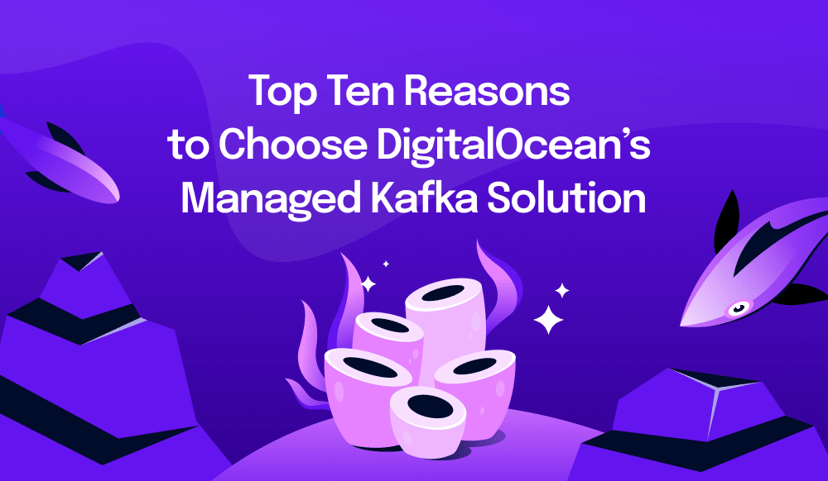Maximize efficiencies with object storage + CDN
By Kirthi Kumar Devleker
Share
Try DigitalOcean for free
Click below to sign up and get $200 of credit to try our products over 60 days!Sign upThe increase in popularity of video streaming and the rise of new technologies such as the Internet of Things (IoT) and Artificial Intelligence has contributed to a rise in the amount of unstructured data, including sensor data, web pages, video files, and text data, that businesses are using. In fact, IDC predicts that unstructured data is likely to represent about 80% of all data worldwide by 2025. This massive increase in the volume of data has grown beyond what traditional storage architectures like block storage were designed to handle. Since traditional storage struggles with handling large amounts of unstructured data, object storage has become more popular as it addresses the drawbacks of traditional storage systems.
Why object storage?
Performance is one of the biggest drawbacks of storing data in a traditional hierarchical form like a directory structure. It’s easier to navigate and retrieve data when the hierarchical directory structure is small, but as the data grows, the directory gets larger, and this can eventually result in poor performance.
Object storage makes it possible to access data without hierarchy by using a flat file space. At the core, every object has three main attributes; An ID, the data itself, and metadata or information on the data. This approach of using objects to store data allows it to scale nearly without limit since it does not need large and directory-based structures for storing huge data volumes. Object storage devices can be aggregated into larger storage pools, and these storage pools can be distributed across various locations, thereby allowing for limitless scaling. Object storage also allows for accessing the data (objects) through APIs. The metadata of the object can be queried from anywhere using HTTP requests, and the data from the object can be retrieved and delivered over the internet.
Object storage offerings like DigitalOcean’s Spaces, an S3 compatible object storage option that features a built-in content delivery network (CDN), can make scaling easier and data more accessible and reliable, doing so at an affordable price.
The power of object storage with a CDN
Websites serving bandwidth-intensive video content, where high latencies and slow loading times directly impact user experience, can benefit greatly from using object storage with a CDN. CDNs reduce page load times, improve performance, and reduce bandwidth and infrastructure costs by caching assets across a set of geographically distributed servers.
If the customers accessing unstructured data like video, web files, audio files, or text files are spread out across the world, and if speed of delivery is important, a CDN can be very useful. A CDN accelerates the delivery of data by caching the content on multiple edge servers or Points of Presence (PoPs) that are located close to where the data needs to be delivered.
By reducing the distance between users and static assets, businesses can deliver content more quickly and improve user experience with faster page load speeds. Offloading assets like images, videos, CSS, and JavaScript files can drastically reduce a server’s bandwidth usage and reduce the load on origin servers, saving costs.
Three use cases for object storage with a CDN
There are many ways to capitalize on the benefits of combining object storage with a CDN. Businesses providing video streaming, both live and on-demand, file sharing of any kind, or who are writing programs that need to be accessed by multiple users across the globe can benefit from the performance optimization and time savings provided by using object storage and a CDN together.
Video Streaming
Using object storage and a CDN allows video streaming applications to provide an engaging experience for the viewers while preventing buffering or stream crashes. After a media file has been served, it can be cached on the local CDN server for another user in the same area. In the case of live streams, CDNs have the additional benefit of improving the start-up lag. In both cases, CDNs free up the origin servers from the burden of having to distribute each media file to every single visitor who requests it.
File Sharing
Object storage with a CDN allows for faster and more reliable file sharing and downloads. Any file can benefit, from an installation file and files containing updates or patches to an hour-long 4K video file. Large files are usually broken into smaller segments, and the CDN converts an incoming download request for a large file into a series of requests for small pieces of the file. Once all the small files have been assembled, the download request is fulfilled. These small files are cached at the edge nodes, so any subsequent requests can get a much faster response, reducing the overall download time.
Read many, write few requests
Object storage combined with a CDN can be used for read many, write few requests. One example is machine and deep learning models. These models can be thought of as a file or a program that takes an input and provides a prediction as the output. Many users simultaneously attempting to access this model can be a performance bottleneck, slowing down the analytics. To speed up the process, the model file can be developed once, and a CDN can make it available to all edge locations, so the overall process happens faster. Any changes or updates made to the model can be uploaded once, and the CDN will make the model available across all edge locations.
Object storage pricing
Large cloud providers can have a complicated and layered approach when it comes to pricing their object storage solutions. The pricing is usually based on multiple factors, including the location where the object storage is created, the type of object storage, the number of requests to the object storage, and the data transfer/bandwidth costs. Due to the variable nature of the above factors, it‘s hard to estimate the final monthly bill. Plus, with some cloud providers, adding a CDN is an additional cost, and estimating the true cost of using the CDN service is challenging because there are multiple factors involved—such as the geographic location where the data is being delivered, the length of the service contract, and more.
Object storage with DigitalOcean
DigitalOcean Spaces provides object storage that’s simple to use and with predictable pricing, starting at $5 per month, including 250GiB of data storage and a built-in CDN for no extra cost. Additional storage is charged at only 2 cents per GiB. With DigitalOcean’s industry-leading bandwidth pricing and flat bandwidth overage of about $0.01 per GB, you can easily estimate your monthly bills. With DigitalOcean, you get flat and transparent pricing that does not vary with location, no layered pricing models, no contracts, and no hidden surprises.
Sign up for a DigitalOcean account today to get started.
Share
Try DigitalOcean for free
Click below to sign up and get $200 of credit to try our products over 60 days!Sign upRelated Articles

Choosing the Right DigitalOcean Offering for Your AI/ML Workload
- November 25, 2024
- 5 min read

Top 10 Reasons to Choose DigitalOcean’s Managed Kafka Solution
Faye Hutsell
- April 23, 2024
- 4 min read

Accelerate Your Business with DigitalOcean App Platform
- April 1, 2024
- 5 min read